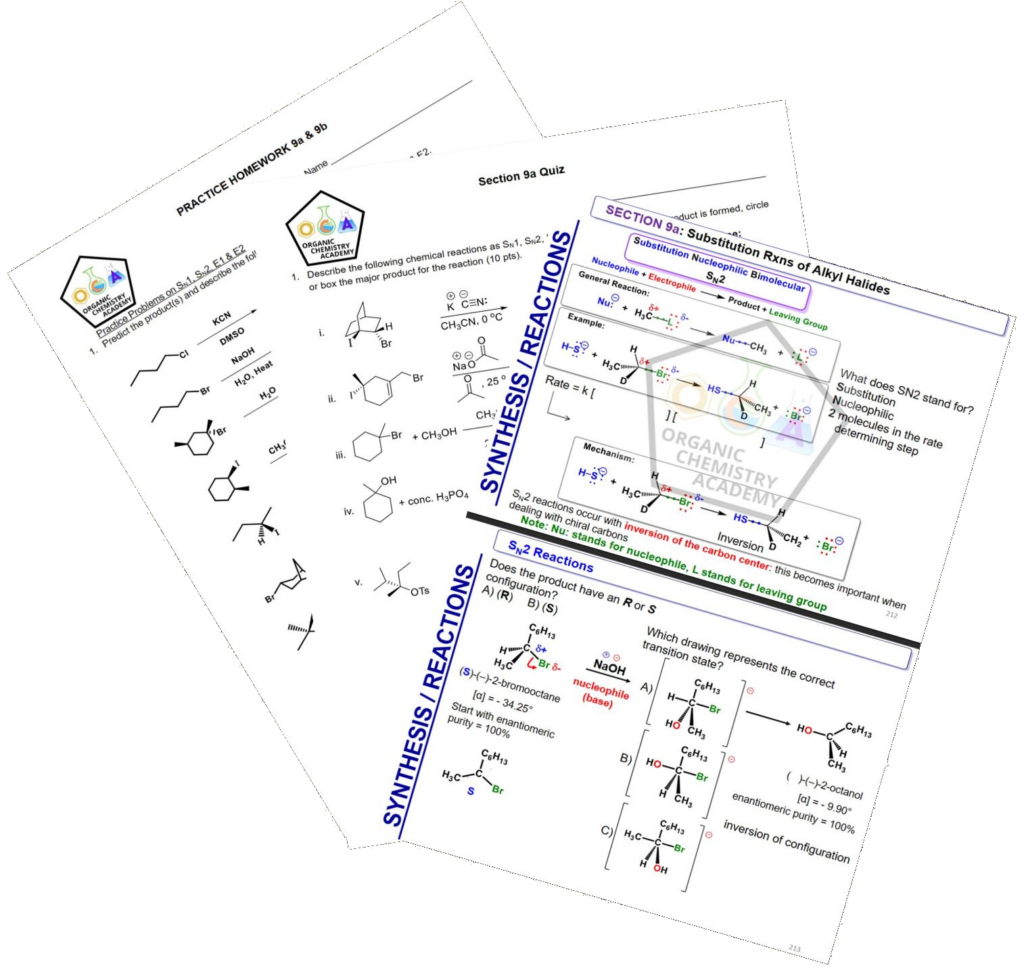Welcome to the Organic Chemistry Academy!
Are you looking for a comprehensive solution to understanding the intricacies of organic chemistry? Look no further than our online course offerings in OCHEM I and OCHEM II. The Organic Chemistry Academy specializes in providing high-quality video lectures and tutorials covering all aspects of these essential subject areas.
Dr. H2O provides a detailed and thorough look at all aspects of organic chemistry. By combining concise yet detailed presentations with real-world applications, you'll grasp even the most challenging concepts. Whether you're preparing for exams, trying to catch up after falling behind, or simply eager to expand your knowledge base, our courses have got you covered.
In addition to offering both semester-long OCHEM I and OCHEM II options, we also provide standalone modules focused on specific subtopics such as alkanes, alkenes, alkynes, reactions, synthesis, and spectroscopy. That means you can pick and choose the material that interests you the most, allowing you to tailor your learning experience to your individual needs.
Don't miss out on the opportunity to unlock your full potential in organic chemistry. Browse our selection of courses today and take the first step towards achieving academic success!

Everything You Need to Succeed!
Our comprehensive video course offerings cover a wide range of topics in organic chemistry, providing you with a solid understanding of fundamental principles, reactions, and mechanisms.
From basic structures and bonding concepts to advanced synthesis and reaction mechanisms, our videos provide clear explanations and visual aids to help simplify even the most challenging material. Each video includes real-world examples and applications to enhance learning retention and relevancy. Additionally, we incorporate practice problems and solutions to reinforce newly acquired knowledge and skills. Dr. H2O presents information in a concise yet informative manner, making our courses accessible and effective for learners of various levels. With our comprehensive video courses, you will gain confidence in your ability to tackle any organic chemistry challenge.
Why should you join the Organic Chemistry Academy?
The Organic Chemistry Academy is the most comprehensive online resource for undergraduate students wanting to learn organic chemistry. It is built upon 4 pillars: concepts, naming and drawing, synthesis/reactions, and spectroscopy.
Our program covers two full semesters of organic chemistry lectures with no monthly membership needed and only a one-time super affordable fee good for one year!
What are the benefits of joining the Organic Chemistry Academy?
Here is the list of benefits that you will be getting:
- A proven organic chemistry professor will lead you to achieve your academic goals.
- You will feel as if you have a personal organic chemistry tutor guiding you.
- This teaching style has successfully helped thousands of students in pre-professional careers.
- Research suggests that visual learners process information best when they see it. The auditory learners prefer to hear information. The read-write learners favor seeing written words. The kinaesthetic learners acquire information through experience and practice.
The Organic Chemistry Academy covers all these different techniques for every type of learner!
- Over 300 instructional videos are available to you.
- There are 21 sections filled with short 5–10-minute videos covering a full year of organic chemistry starting with reviewing general chemistry until introduction to biochemistry syntheses.
- Over 600 pages of crafty designed instructor’s notes covering Organic Chemistry I and II.
- Each section has a quiz to test your knowledge of the subject.
- There are 21 extensive Practice Homework Sets designed to give you plenty of practice time!
Check out our Free Area for samples of our instructional videos.
Additionally, Section Block Comprehensive Exams for Organic Chemistry I and II are available in the Store to prepare you even further.
Student Reviews

Baille E.
University of Tennessee at Chattanooga
This course is perfect for getting in extra practice! It provides clear instructions with varying difficulty which allowed me to master the material and excel on my exams!

Jeremy A.
Wake Forest School of Medicine
This course turned organic chemistry from a “weed-out” class to a class that I thoroughly enjoyed. The easy explanations and connections helped me to retain the material long-term to succeed not only in this class but in the MCAT as well. I highly recommend this course.

Mackenzie E.
University of Tennessee at Chattanooga
Dr. Odens has the ability to break down complex material and make it easy to understand for anyone! Through his teachings, organic chemistry has become my favorite class. His excitement for teaching makes it engaging for the student and the concepts become simple. Thank you, Dr. H2O!

Clayton S.
Andrews University
This course and its materials taught me how to really grasp OChem. Dr. H2O does an amazing job in explaining every single detail. His way of teaching helped me “to flip the tortilla” to think from a new angle to approach OChem questions differently. I recommend this course not only for OChem, but as a learner who strives to think innovatively.

Jada M.
Southern Illinois University
I cannot stress the importance of practice when taking organic chemistry. This course has an abundance of practice material that helped me get comfortable with questions in class or during an exam. The practice quizzes, homework sets, and practice tests were essential to succeed in organic chemistry.

Samuel A.
Lincoln Memorial University
Organic chemistry is one of those courses that will be difficult no matter what. Dr. H2O is a great resource that makes learning organic chemistry easier. He can explain complex topics in simple terms, which makes learning the material simpler. His website also has an abundance of practice problems that vary with difficulty. Having access to a wide variety of practice problems in chemistry is the key to success. Dr. H2O will help you lay down a solid foundation for organic chemistry, setting you up for success in your university courses.
